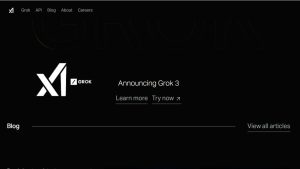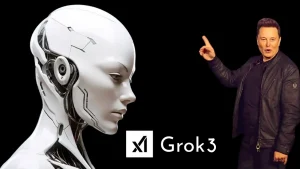Creating tech content online can be highly rewarding, but it comes with challenges—particularly the risk of receiving a government copyright strike. These strikes can affect your online presence, monetization, and even lead to legal consequences.
Creating tutorials, software guides, or tech reviews, understanding how to protect your content is essential. Here are pro tips to avoid govt copyright strike while helping you create content safely, legally, and professionally.
Understanding Govt Copyright Strikes
A government copyright strike is an official notice or penalty issued when content violates copyright laws. Unlike standard platform-level warnings, a government strike has legal implications and may affect your credibility or income if you monetize your content.
For tech creators, the risk is particularly high because tutorials, software reviews, and product demos often include third-party images, logos, music, or code. Fair use allows some flexibility for education, commentary, or research purposes, but the boundaries are strict. Misusing content under the guise of “fair use” is a common cause of copyright strikes.
Pro Tip: Always treat content that isn’t yours as copyrighted unless explicitly stated otherwise. When in doubt, seek permissions or use royalty-free alternatives.
Common Reasons Tech Creators Receive Govt Copyright Strikes
Many creators unknowingly trigger strikes due to a few common mistakes:
- Using copyrighted media without permission: Screenshots, logos, music, and videos may seem harmless, but unauthorized use can trigger strikes. Even a short clip or background music can be considered infringement.
- Uploading software tutorials or code snippets: Demonstrating software use can violate licensing agreements if proprietary code or tools are shown without permission. Some software licenses specifically restrict public demonstration.
- Misuse of licensed images, music, or videos: Even stock content may require attribution or have limits on commercial use. Ignoring these terms is one of the most frequent causes of copyright violations.
- Reposting content from other creators: Copying tutorials, product reviews, or code from others—even with slight modifications—can be considered infringement.
Pro Tip: Always double-check licensing terms and confirm usage rights before using any third-party media.
Legal Basics Every Tech Content Creator Should Know
Understanding copyright laws is crucial to avoid strikes:
- Key copyright laws relevant to tech content: Familiarize yourself with local copyright regulations, including digital content laws, software licenses, and educational exceptions. Knowing the law protects you from accidental infringement.
- DMCA and government notices: The Digital Millennium Copyright Act (DMCA) governs online content use in the U.S., while similar laws exist worldwide. Understanding how these notices work helps you respond promptly and effectively.
- International copyright regulations: If your content reaches a global audience, you must consider international agreements like the Berne Convention, which ensures copyright protection across borders.
Pro Tip: Subscribe to newsletters or follow updates from official copyright offices to stay informed about changes and new rulings.
Pro Tips to Avoid Govt Copyright Strikes
Here’s how to create strike-proof content:
- Verify content ownership: Never assume content online is free to use. Double-check ownership, licensing, and permission before using it in tutorials or guides.
- Use royalty-free or licensed media: Platforms like Unsplash, Pexels, Pixabay, and Free Music Archive offer free images, music, and videos that are safe for personal or commercial use.
- Proper attribution for third-party content: Always cite your sources. Even when licenses allow use, providing attribution demonstrates professionalism and transparency.
- Avoid content duplication or scraping: Instead of copying, add value by transforming content with tutorials, analysis, or commentary. Original content builds credibility and reduces legal risks.
- Keep records of permissions and licenses: Documenting permissions can protect you in case of disputes or strikes. Maintain organized records of all sources and licenses used.
Pro Tip: Integrate these practices into your content workflow to make copyright compliance a routine part of your creation process.
Tools and Resources to Stay Safe
Several tools can help you prevent copyright issues before publishing:
- Copyright checker tools: Services like Copyscape, TinEye, and YouTube Content ID help identify copyrighted material in your content.
- Platforms providing royalty-free content: Unsplash, Pixabay, Pexels, Free Music Archive, and Storyblocks are excellent sources for safe images, videos, and music.
- Government portals for copyright information: Official copyright offices often provide guidelines, updates, and resources that are essential for content creators.
- License management tools: Tools like Creative Commons search or license trackers help ensure that all content used complies with copyright terms.
Pro Tip: Regularly audit your content to ensure all media, code, and tutorials comply with licensing requirements.
Handling a Govt Copyright Strike
Even the most careful creators may face strikes. Here’s how to respond:
- Immediate actions: Review the notice carefully, identify the infringing content, and temporarily remove or block it from public view.
- Appealing legally: Most platforms and government notices have formal appeal procedures. Provide documentation proving ownership, permission, or fair use to contest the claim.
- Learning from the strike: Analyze the root cause, adjust your content workflow, and maintain records of permissions and licenses. This prevents repeated mistakes.
Pro Tip: Respond quickly and professionally. Ignoring a strike can escalate the situation and lead to harsher penalties.
Best Practices for Tech Content Creation
Safe content creation goes hand-in-hand with credibility and audience trust:
- Produce original content: Focus on creating unique tutorials, guides, or reviews. Original content is both legally safer and more engaging.
- Collaborate safely: Ensure agreements and permissions are clear when working with other creators. Written contracts can prevent disputes.
- Document sources and permissions: Keep a detailed record of all third-party media, code, and software used. Documentation protects you if a strike occurs.
- Educate yourself regularly: Stay updated on copyright law changes, software licenses, and platform policies. Knowledge is your best defense.
Pro Tip: Treat copyright compliance as an ongoing process, not a one-time task.
Implementing these strategies not only protects your work but also builds trust and credibility with your audience, ensuring long-term success as a tech content creator.
FAQs
1. What is a govt copyright strike and how does it affect tech content creators?
A government copyright strike is an official notice issued when content violates copyright laws. For tech creators, it can lead to content removal, demonetization, account suspension, or even legal penalties if ignored. Understanding strikes helps creators stay compliant and protect their work.
2. How can I avoid a govt copyright strike on my tech tutorials or videos?
Always use royalty-free or licensed media, provide proper attribution for third-party content, verify ownership before publishing, and follow fair use rules for educational or commentary purposes. Avoid reposting or scraping content from others.
3. Is it safe to use screenshots or software demos in tutorials?
Yes, under fair use guidelines, but ensure you don’t include copyrighted logos, media, or proprietary code without permission. Transformative use, commentary, or educational purposes generally fall under fair use.
4. Can I use open-source code without getting a copyright strike?
Open-source code can be used safely if you follow the license terms, provide proper attribution, and comply with restrictions such as sharing derivative work under the same license if required.
5. Do govt copyright strikes apply internationally?
Often yes. Many countries follow international copyright treaties, such as the Berne Convention. Global tech content creators need to be cautious when using copyrighted material, even if hosted outside their country.
6. What are the best sources for royalty-free images, videos, and music?
Safe platforms include Unsplash, Pixabay, Pexels, Free Music Archive, Storyblocks, and Creative Commons Search. Always check licenses to confirm commercial usage is allowed.
7. How do I respond if I receive a govt copyright strike?
Review the notice immediately, identify the infringing content, temporarily remove it if needed, and submit a formal appeal with documentation proving ownership, permission, or fair use. Responding promptly can prevent escalation.
8. Can educational and tech commentary content qualify for fair use?
Yes, if it’s transformative, provides commentary, or adds value such as tutorials or analysis. However, fair use is limited, and misuse can still trigger a strike, so proper verification is crucial.
9. Should I consult a lawyer for copyright concerns as a tech content creator?
Yes, especially if your content is monetized, high-stakes, or you face repeated copyright strikes. A copyright lawyer can provide guidance on licensing, permissions, and compliance with govt regulations.
10. How often should I check copyright rules and licensing updates?
Regularly. Copyright laws, licensing terms, and platform policies change frequently. Staying updated ensures your tech content remains compliant and reduces the risk of strikes.





